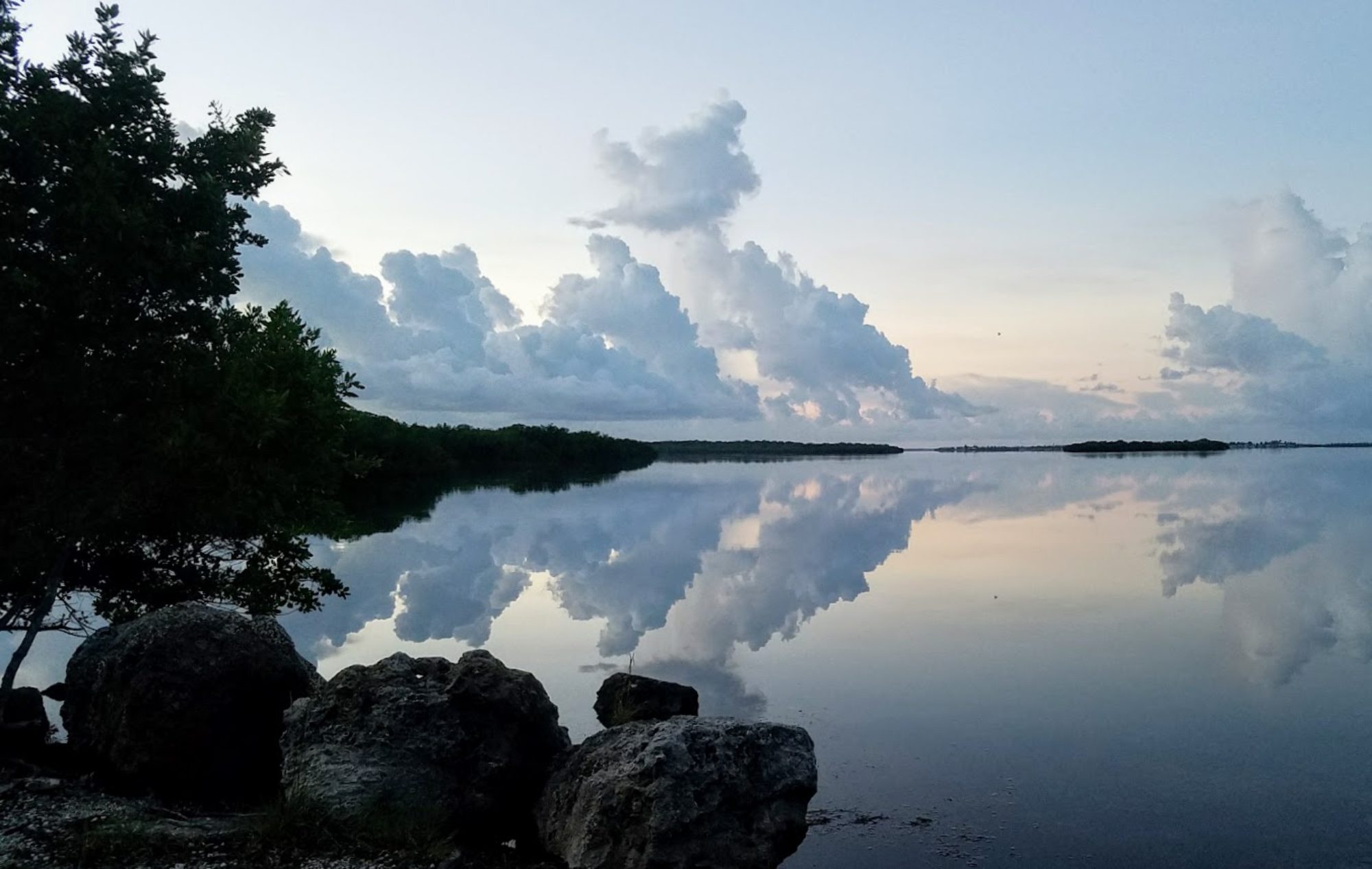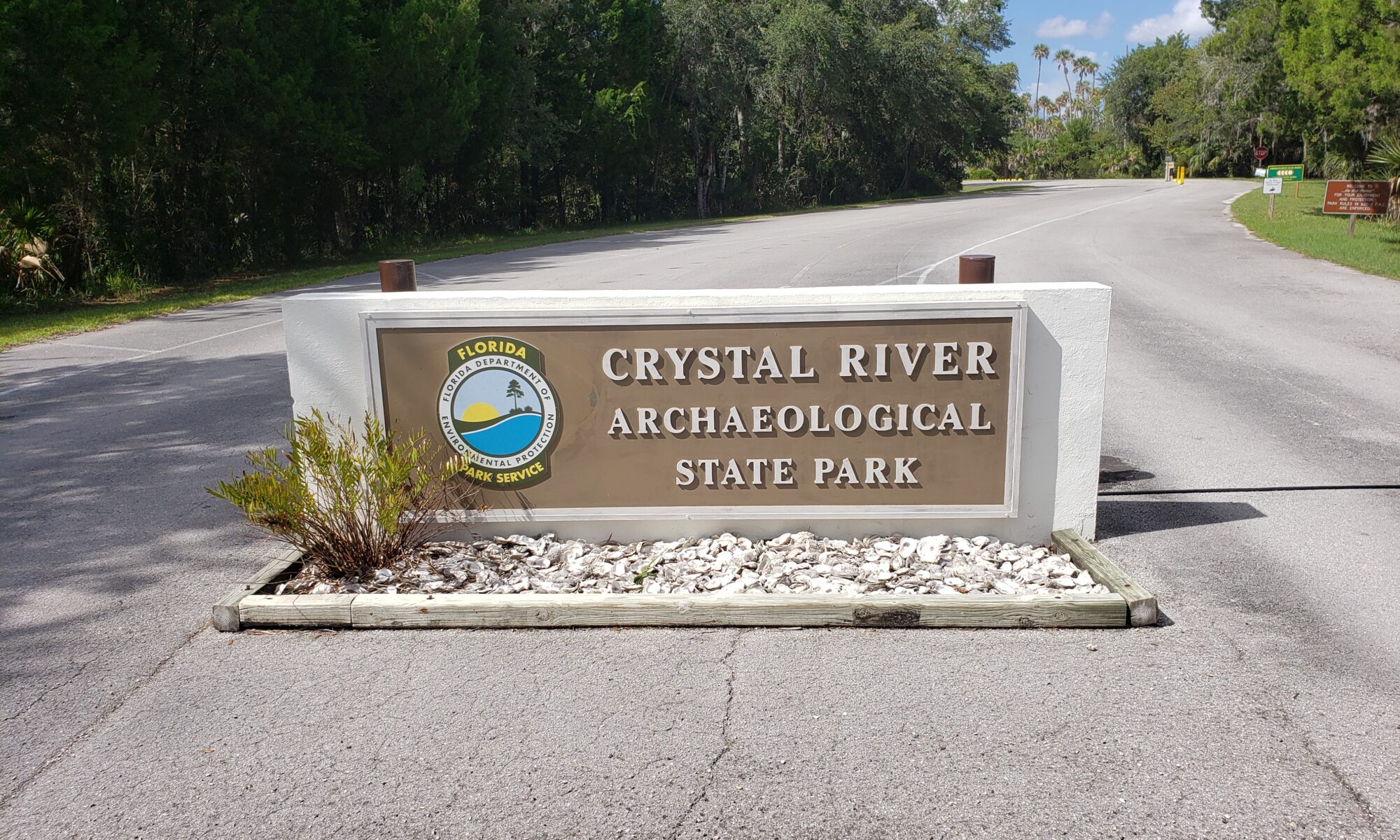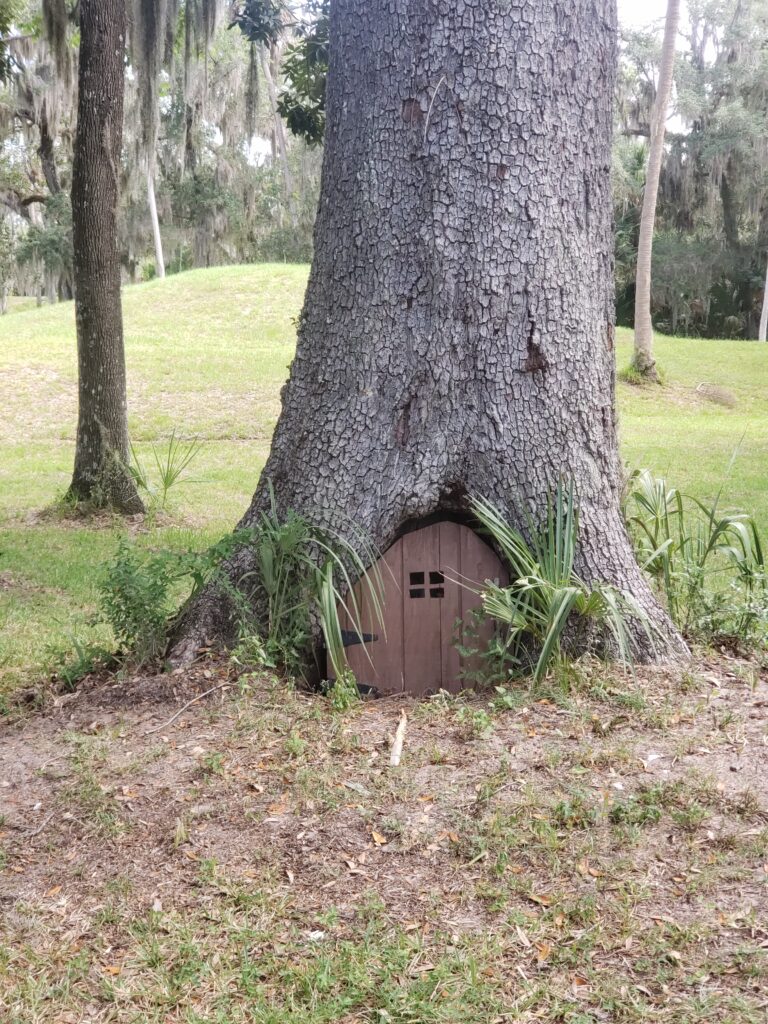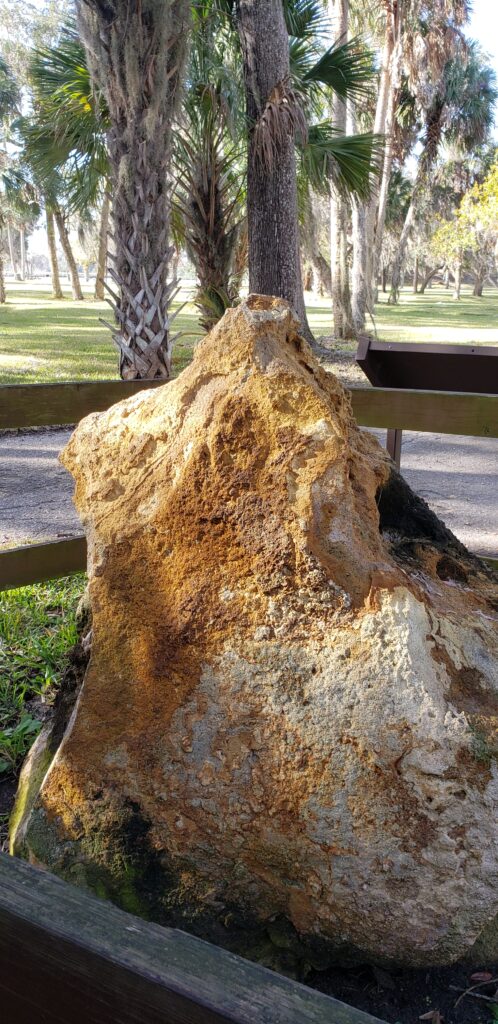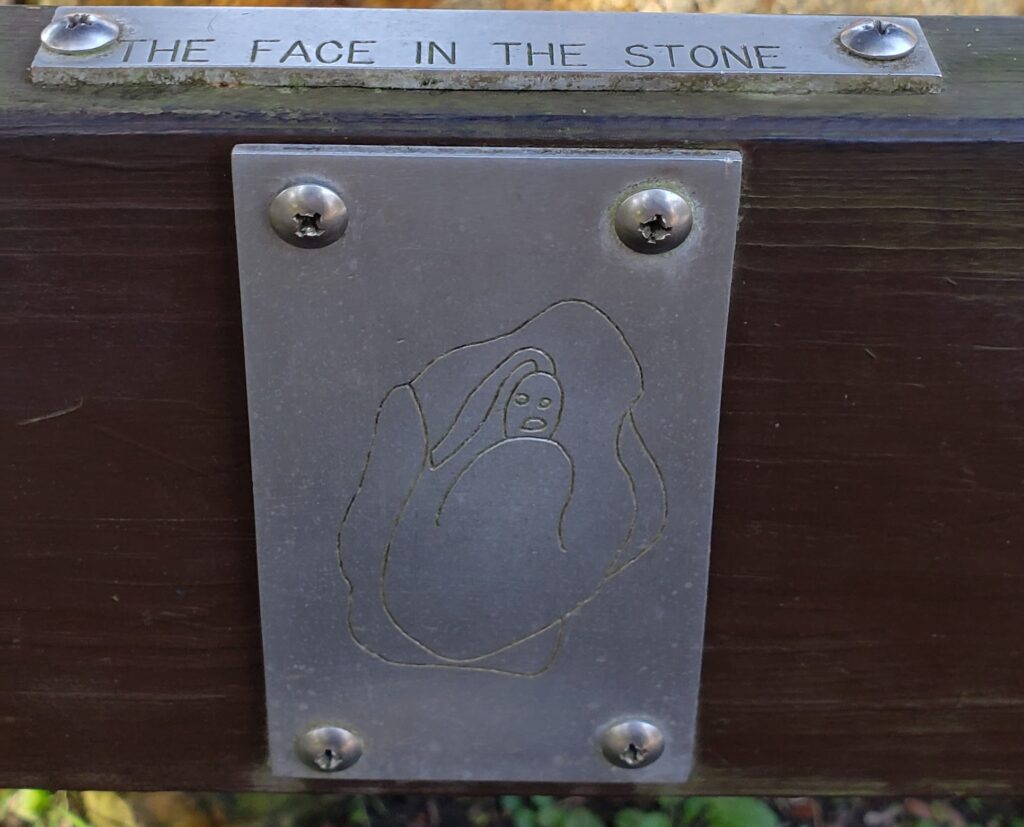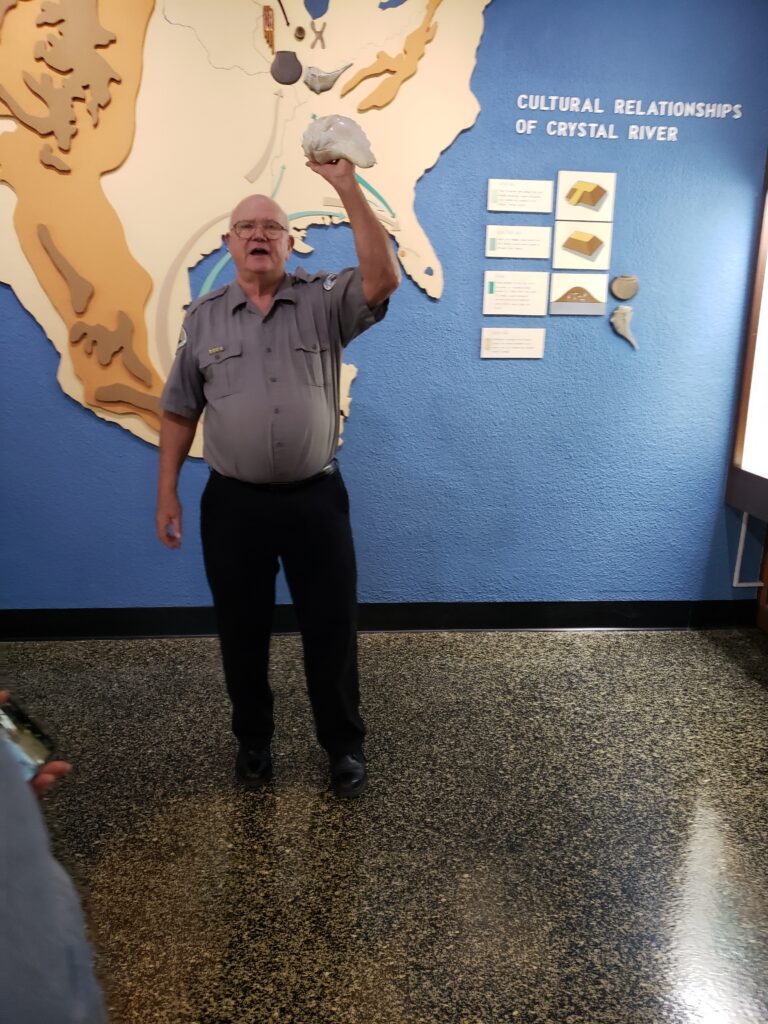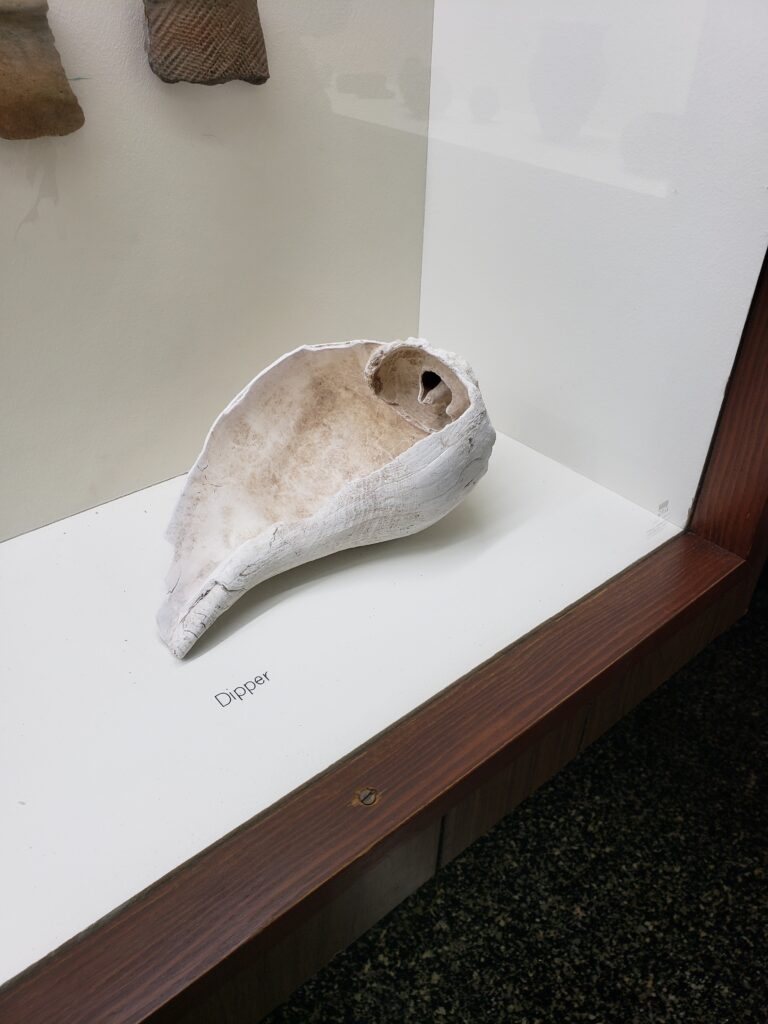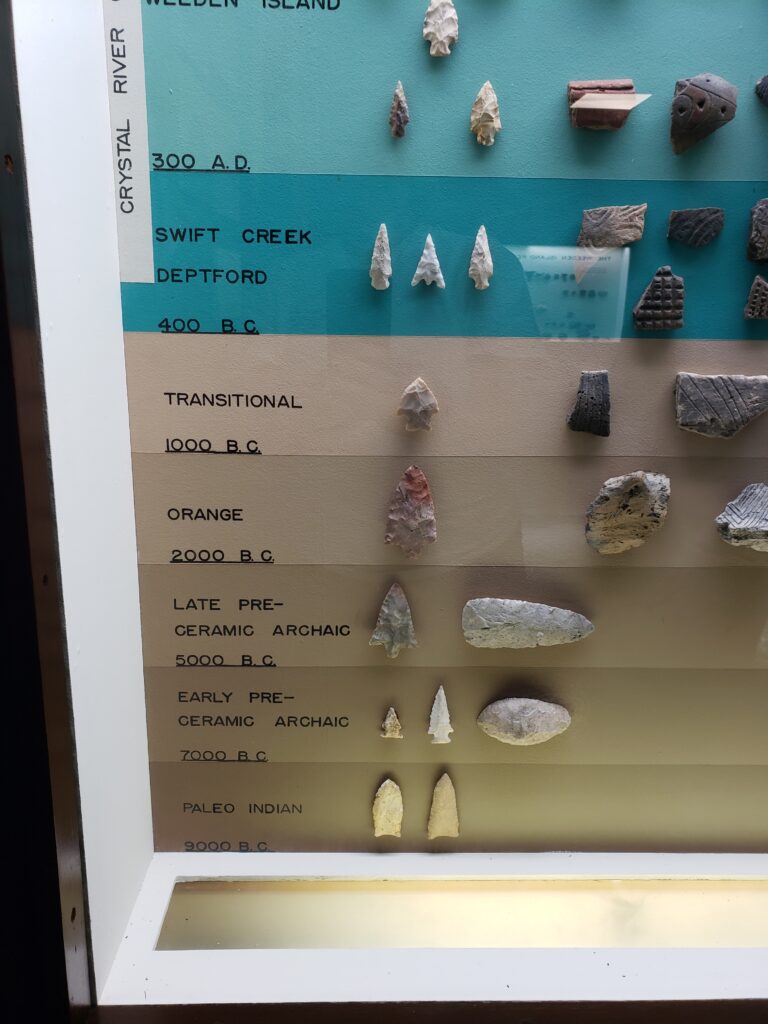If every New Year’s Day could be this terrific, I’d be all in favor of making every day the beginning of a new year. We planned to do a very short guided hike at the mounds at Crystal River, but ended up doing a series of short hikes and seeing more than we imagined. There’s a lot to see and do in Citrus County! In fact, we saw so much that I’ve had to split this into two blog entries. Watch for the second entry next week.
Churchhouse Hammock
We were early for our appointment with the Ranger at Crystal River Archeological State Park, so we decided to check out Churchhouse Hammock. It is a part of the Crystal River complex of parks, and I’ve read lots of favorable comments about it. We only had about half an hour, so we did not get very deep down the trail blazed with yellow, but it was enough to know we’d like to go back. An informational kiosk had a flyer requesting that we report any skunk sightings. We did not see a skunk, but at one point we sure smelled evidence that a skunk had been alarmed! Or maybe, just maybe . . . could it have been the reclusive Florida Skunk Ape? There was a great deal of limestone on the trail because of the underlying karst geology. These loose chunks can be a tripping hazard for those of us who are used to sand trails, so mind your step! Resurrection fern growing in the stone suggests that this trail is often very wet.

We had reached a point of the trail where birdsong outweighed traffic noise when we had to turn around so we would not miss our appointment to meet the park ranger at the Archeological site. The Boardwalk portion of the trail is closed because it’s under repair, but we both want to check out this park again, because there are other trails to enjoy. As we left, we noticed a large flowerbed planted with natives. I can’t wait to see that in bloom!
Crystal River Archeological State Park
Overview
This park first came to our attention a few years ago when we were on our way to Yankeetown for a long weekend. Friends met us in Yankeetown, stopping at the park to visit the museum, and they thoroughly enjoyed themselves. Finally, I saw a notice for a “Moon over the Mounds” walk in January 2020 and signed myself up. Anyone can give you the facts about this place, and I’ll share some of what I learned below. But to hear those facts from rangers with an obvious passion for this place makes the experience moving. Today, Steve and I were fortunate enough to attend another guided hike at Crystal River, and while the park looks different in daylight, it is no less special under the sun as the moon.
Today’s hike was led by Olivia Morrison, a Ranger at Crystal River. She started her career at Homosassa Springs (another park for another day!), but I’m so glad she came to Crystal River so we could enjoy her interpretation of this site. Also on the tour was the President of the Friends of the Crystal River. I was so busy enjoying the walk that I took very few pictures. My mind was swimming with the idea of kayaking the river and getting another perspective of this park. You can see some terrific pictures by going to the Crystal River Friends Facebook page. You can learn a great deal about the people who lived here and built the mounds, and view a terrific photo of Mound A, at this site.
The Mounds
There are three types of mounds at this park. Although mounds often appear to be natural features, they are human-built. While we do not always fully understand the reason a particular mound was built, they do appear to be purpose-built. At Crystal River, you will see Midden Mounds, Burial Mounds, and a Ceremonial Mound.
In the early 1900s, Clarence Moore first mapped the mounds at Crystal River. Archeology was an infant field at the time, and while his practices would horrify modern archeologists, he published much of his work and provides an important record of Crystal River. His main interest was in items from the burial mounds, and he had no care for returning the site to its original appearance after he dug.
Mounds J, K, and A
If you stand facing the front of the museum, follow the trail to the right. This will take you to three mounds. They are referred to as Mound J, K, and A. Mound J is the first you will pass, and the smallest, Mound K is a bit larger. They are midden mounds, where everyday items are buried and build up over time. They contain oyster shells, discarded tools, animal bones, and other everyday discards. Studying these items can provide important information about how people lived when the mounds were being formed.
As you follow the trail past J and K, you will arrive at Mound A. This is the largest of the Crystal River Mounds. Today, the mound is considerably smaller than it would have been originally, with two-thirds of the material removed to use as fill for a mobile home park that once stood in its shadow. This removal occurred before there was a real understanding of how culturally important the mounds are.
Stela 1
Stela 1 is not a mound. Rather, it is one of two carved stones found at Crystal River. The purpose of the carving is not known. It may be a welcome, it may be a warning. . .no one knows for sure. It appears that there may have been offerings of food left here. On today’s visit, I was able to clearly see the face in the carving; I think the light must need to be just right because I have never seen it before.
Central Burial Complex – Mounds C, D, E, and F
There is so much to learn about this part of the park! Today, the four mounds appear as one mound, located fairly central to Mound A and Mound H. It is very similar to burial sites found in the Ohio River Valley, and artifacts found here bear out that connection. This is the southernmost US site to use such a layout. The outer mound contained burials and was filled with sand. Artifacts recovered from these mounds include copper ear spools and pan pipes, along with other wares considered to be gifts. This is not conclusive evidence, but suggests that these mounds were the burial place for an upper class.
In a case of the Universe providing back up for itself, the night we did this tour, Steve was reading about Payne’s Prairie, and his book mentioned mounds along the edge of the prairie which may hold similar Ohio Valley artifacts.
Mound H
Mound H is shaped like a T. It appears to be ceremonial as the base of the T overlooks a plaza area where crowds of people could have assembled for rituals or announcements. It is made mostly of limestone rocks, and is unique in the US.
Mound G
This is a smaller burial mound than the Central Complex, and appears to be one of the oldest mounds at Crystal River. The bodies buried here were not accompanied by the gifts found in the Central Complex, so they may have been of a different social class.
The Museum
The museum is currently closed because of COVID19 restrictions. However, if it has reopened when you visit, I cannot recommend it highly enough. Like other State Park museums, it is small but jam-packed with artifacts and informative interpretation.
